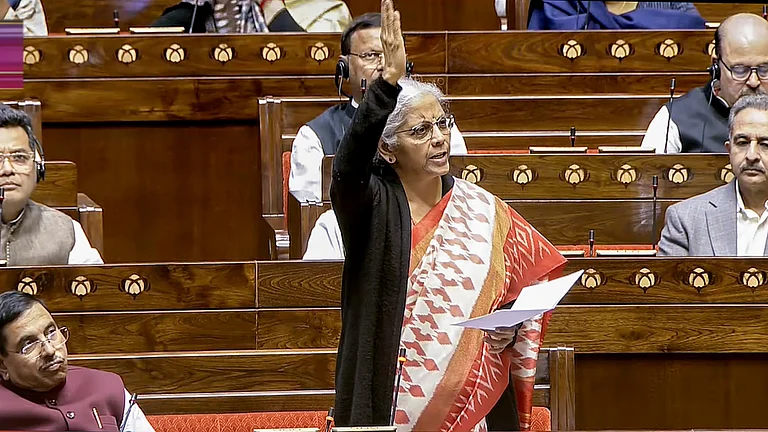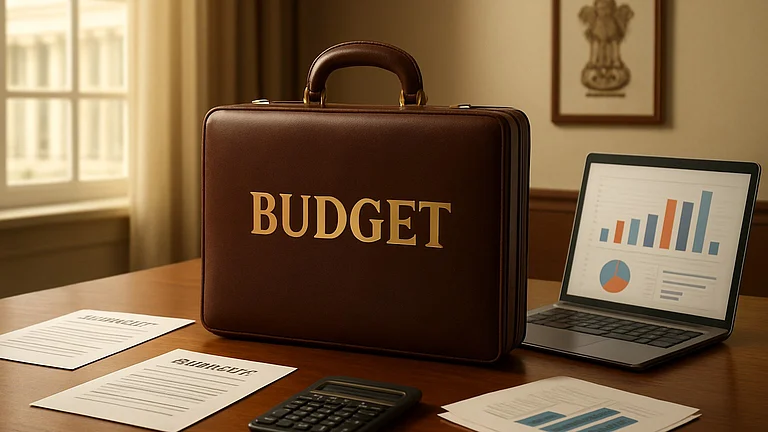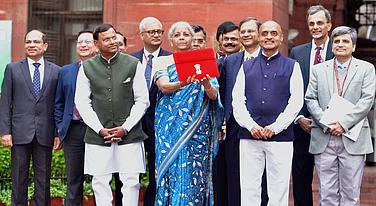The Union Budget FY 2024–25 is the first budget of the third consecutive term of the government. On this backdrop, it provides the right ingredients for laying the foundation to help propel India to the next decade of growth aligning with the goal of ‘Viksit Bharat’. The budget outlines nine priorities including growth and employment. It is a balanced mix of progressive policies aimed at fostering job creation, boosting infrastructure, supporting agriculture and simplifying the tax structure.
The Union Budget has walked the fine balance between productive expenditure and fiscal consolidation. Targeted central fiscal deficit for FY25 is set at 4.9 per cent as compared to 5.1 per cent set in the vote on account. More importantly, the government continues to move on the path of fiscal consolidation seeking to bring down the fiscal deficit to below 4.5 per cent of GDP in FY26 with the guidance to reduce debt-to-GDP ratio in the future.
The government announced lower net (Rs 11.6 lakh crore vs Rs 11.8 lakh crore) and gross (Rs 14 lakh crore vs Rs 14.1 lakh crore) market borrowing estimates compared to the interim budget, led by the lower fiscal deficit estimate. At these levels, net market borrowing is likely to fall 1.5 per cent year-on-year, at a time when nominal GDP is meant to grow 10.5 per cent year-on-year, keeping the supply-demand dynamic favourable.
Among the key priorities are job creation and skill development—a crucial step towards addressing unemployment and enhancing the employability of the youth. The finance minister has allocated a massive Rs 2 lakh crore under five schemes covering job creation and skill development. These includes one-time payment for youth on joining formal employment, funding the EPF [Employee Provident Fund] contribution up to Rs 3,000 per month for four years to incentivising the corporate sector to use CSR [Corporate Social Responsibility] funding to train one crore interns every year over the next five years with monthly stipends. Setting up 1,000 training institutes and encouraging women’s workforce participation are steps in the right direction.
The commitment towards investment-led growth is visible in the budget presented on July 23. The total outlay for capital expenditure this year is Rs 15 lakh crore and is around 14 per cent higher than last year. Specifically, allocation for PMAY [Pradhan Mantri Awas Yojana] is up 55 per cent y-o-y and 1-2 per cent in total allocation for roads and railways, and 54 per cent jump in allocations for metros in FY25.
The budget placed a special emphasis on agricultural productivity, employment generation, and environmental sustainability. It encouraged a shift in cropping patterns, the adoption of advanced agricultural technologies, and the promotion of export-oriented primary products. There is an outlay of Rs 1.52 lakh crore for agriculture and allied sectors.
The finance minister announced an increase in taxation on short-term and long-term capital gains. Capital gains tax has been revised up for both the short-term (to 20 per cent) and long-term (to 12.5 per cent) for certain assets. The exemption limit of capital gains on certain financial assets was raised (to Rs 1,25,000/year) along with a change in the tenure of long-term assets (one year for listed financial assets and two years for unlisted financial assets and all non-financial assets). There was also a hike in STT [Securities Transaction Tax] on derivatives, to dissuade speculation.
On the personal tax front, standard deduction for salaried employees was increased (to Rs 75,000 from Rs 50,000) under the new tax regime. Likewise, deduction on family pension for pensioners was enhanced (to Rs 25,000 from Rs 15,000), bringing relief to about 40 million salaried individuals and pensioners. The tax rate structure under the new tax regime was also revised, helping a salaried employee save up to Rs 17,500 in income tax.
In summary, the Union Budget walks the talk in terms of the policy focus of the government towards sustainable and productive expenditure, promoting manufacturing, creating employment and maintaining fiscal prudence.
From an equity markets standpoint, the market today is as entertaining as Amar Akbar Anthony. There are stocks like Amar, an upright police officer—which are with good fundamentals and fair valuations. There are stocks like Anthony, a person with a good heart but taking shortcuts, with good fundamentals but high momentum and high valuations. In the movie eventually, Anthony becomes like Amar and all ends well.
Accordingly, we recommend investors pick quality over momentum, high floating stock/diversified ownership over low floating stock or concentrated holdings and fair valuations over expensive valuations.
The author is Managing Director, Kotak Mahindra Asset Management Company. Views are personal





.jpg?w=801&auto=format%2Ccompress&fit=max&format=webp&dpr=1.0)























